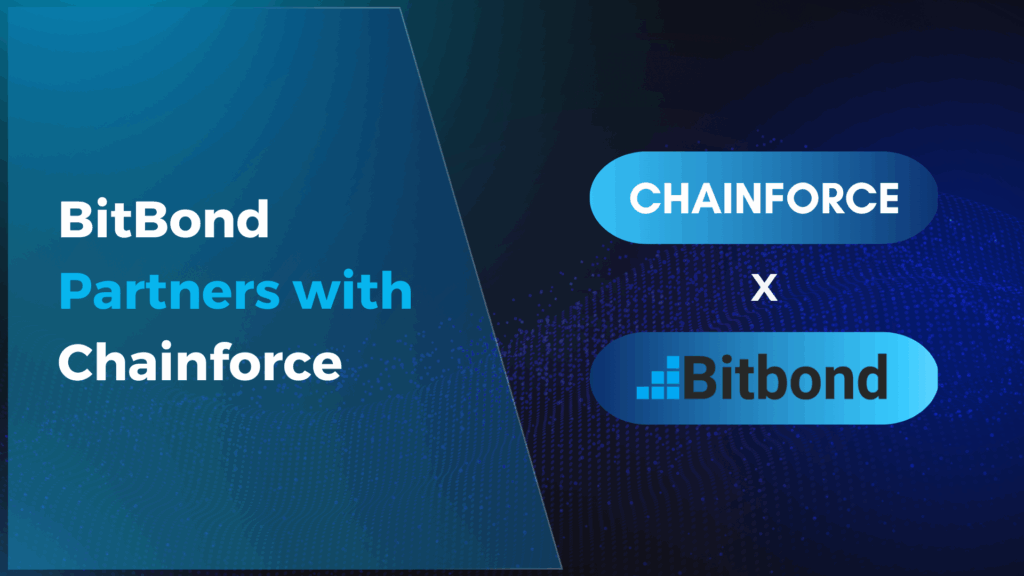In the rapidly evolving landscape of digital assets, stakeholders must understand token vesting schedule to maximize investments and ensure growth. This process, fundamental to tokenomics, aligns the interests of developers, investors, and users by regulating token distribution. Inadequate planning or comprehension of this mechanism can impact market stability and long-term viability.
The article explores the intricacies of a token vesting schedule and highlights its critical role within tokenomics. Readers will be introduced to the various types of vesting schedules. They will navigate on how to design an effective one tailored to specific project needs. Also, common challenges encountered along the way. By providing a comprehensive guide, this piece aims to equip stakeholders with knowledge and tools. This ensures strategic alignment with their project’s objectives and timelines.
What is Token Vesting Schedule?
Token vesting schedule, often referred to as token lock-up, is a strategic mechanism. It’s implemented in the blockchain ecosystem to manage the distribution of cryptocurrency tokens over a specified period. This process involves locking down tokens or coins, preventing the token holder from accessing or transferring them until certain conditions are met.
By controlling the supply of tokens through locking, cliffs, and vesting, projects can align supply with demand. These mechanisms provide a runway for all stakeholders. The business model and revenue model bandwidth should drive this delicate configuration. This ensures optimal results.
Key Objectives and Benefits of Token Vesting Schedule
- Stakeholders’ Long-term Commitment and Incentives: Token vesting is crucial for motivating and retaining key project members. It ensures long-term commitment by aligning their interests with the project’s success.
- Investor Confidence: By locking tokens for certain periods, token vesting instills confidence among investors. It demonstrates the team’s dedication to the project’s longevity.
- Price Stability: It prevents the immediate selling of tokens upon release, which can lead to price volatility and potentially harm the project’s reputation and market stability.
Implementation Methods
Token vesting schedules can be highly variable and include different types. It can be time-based, event-based, and hybrid models, each with unique distributions. A common approach is a “cliff” period followed by gradual releases. For example, tokens might be inaccessible for one year (cliff period), after which they are released monthly. However, non-linear distributions and event-based triggers can also be employed to better match specific project needs. We will explore these methods in more detail later in the article. Smart contracts often enforce these schedules, making the vesting process transparent and automatic.
Broad Applications
Vesting is not limited to team members but also applies to advisors, partners, and early investors. This broad application helps ensure that all parties involved have a vested interest in the project’s success. It discourages early exits and promotes sustained project development.
By utilizing token vesting, blockchain projects can strategically manage token distribution, ensuring long-term project engagement and stability. This method aligns the interests of various stakeholders and enhances the overall trust and efficacy of the project within the crypto market.
Importance of Token Vesting Schedule
Encouraging Long-term Commitment
Token vesting platforms are instrumental in promoting long-term engagement and aligned incentives among stakeholders. This approach discourages short-term profit-taking and fosters a commitment to the project’s vision and success. Implementing vesting schedules linked to project milestones motivates team members to achieve these goals. It further align their interests with the project’s long-term objectives. Vesting in crypto gradually transfers ownership, encouraging stakeholders to remain monetarily attached to the project’s success over time.
Maintaining Market Stability
Vesting schedules play a crucial role in reducing market volatility by limiting the immediate availability of tokens. This gradual release process helps prevent large-scale token dumps, which can lead to price fluctuations and undermine investor confidence. By preventing immediate token sales or transfers, vesting platforms ensure a more stable and sustainable project ecosystem, attracting a broader range of investors who prefer lower price risks. Additionally, vesting acts as a deterrent against pump and dump schemes by imposing token lock-up periods, thus promoting market integrity.
Furthermore, vesting helps manage token supply to match market demand, guided by the business model and the bandwidth of the revenue model. Aligning token supply with the project’s long-term financial strategy ensures market stability and supports the project’s overall success.
Ensuring Fair Distribution
Token vesting is essential for achieving a fair and equitable distribution among stakeholders. By releasing tokens gradually, vesting prevents a select few from controlling a substantial portion of the token supply right from the start. This method ensures that tokens are distributed in a manner that mitigates the risk of disproportionate token accumulation, allowing for more democratic participation within the community. Additionally, token vesting can be fine-tuned to the specific objectives of the business, ensuring that certain stakeholders are rewarded earlier and others later, with corresponding adjustments to their vesting schedules. Projects with token vesting mechanisms appear more trustworthy. They demonstrate a commitment to fair and transparent token distribution.
Types of Token Vesting Schedules
Time-based Vesting
Time-based vesting is a straightforward approach where tokens are released to holders at regular intervals, such as monthly or annually, until the full amount is distributed. This method ensures a predictable and uniform release of tokens over a set period, without the tokens being released in blocks on specific dates. The most common duration for core team members is a 4 year period, often with a 1 year cliff. Time-based vesting promotes consistent engagement from the recipients but offers limited flexibility and may lead to potential early dumping of tokens.
Reach out to learn more about implementation this through 3rd party smart contracts
An example: ARBITRUM ($ARB) TOKENOMICS AND THEIR $2.32 BILLION VESTED TOKEN UNLOCK CHALLENGE
Event-based Vesting
Event-based vesting, unlike its time-based counterpart, releases token rights upon the occurrence of specific events. These events could range from achieving a particular development milestone, airdrops, or reaching a funding goal. Additionally, it can depend on project liquidity conditions, so when a certain amount of liquidity is available, new tokens are unlocked, enabling the project to better manage its supply based on what it can sustain. This type of vesting is often part of a project’s growth strategy and provides flexibility by allowing tokens to be released in response to significant achievements or technical advancements. However, it can lead to liquidity and price fluctuations, depending on the market’s reaction to the event.
Hybrid Models
Hybrid models combine elements of both time-based and event-based vesting. It offer a tailored approach to token distribution. These models can include a cliff period followed by regular time-based releases, alongside event-triggered distributions. This approach is beneficial for projects that seek to incentivize long-term commitment and reward significant milestones or achievements. Hybrid models provide customization and optimized distribution but can introduce complexity and potential misalignment if not carefully designed.
Chainforce assists you in finding the best vesting approach for your tokenomics. To learn more, visit : https://chainforce.tech/methodology/
Designing an Effective Vesting Schedule
Key Factors to Consider
When setting up a token vesting schedule, several critical factors must be considered to ensure the effectiveness of the distribution. The total timeframe of the vesting period should be aligned with the project’s goals and duration, ranging from a few months to several years. It’s essential to decide on the type of vesting—whether it will be linear, allowing for a consistent release of tokens, or cliff vesting, where tokens are released all at once after a certain period. Additionally, the security of the tokens during the vesting period is paramount, often involving smart contracts or cryptographic methods to prevent unauthorized access.
Balancing Investor and Community Interests
A well-designed vesting schedule must balance the needs of investors with the broader community interests. For investors, the schedule should provide enough confidence to support the project long-term, without fear of sudden token devaluation due to mass sell-offs. For the community, the schedule should ensure fair and equitable access to tokens, promoting widespread participation and support for the project. This balance is crucial in maintaining a healthy economic environment that fosters growth and stability within the crypto ecosystem.
Achieving Sustainability
Sustainability in tokenomics is achieved by carefully planning the vesting schedule to support ongoing project development and growth. The vesting schedule should be adaptable to project needs and market conditions, possibly requiring adjustments as the project evolves. Regular audits and legal compliance are also vital to ensure the schedule remains transparent and fair. Moreover, considering lock-up periods can add an additional layer of stability, preventing premature token sales that could harm the project’s market position.
Designing and analyzing tokenomics vesting schedule in Chainforce
At Chainforce, we delve deeply into constructing and analyzing vesting perspectives through several key steps. The first approach involves estimating the expected selling pressure based on different token holder categories such as investors, the foundation, and the community. We also consider various personas, including those seeking short-term ROI, pessimistic holders, long-term commitment holders, and optimistic holders. This helps us understand the potential market dynamics and adjust the vesting plan accordingly.
Next, demand forecasts are analyzed to ensure that the designed token supply matches the demand generated by the business model. This alignment is crucial for maintaining market stability and achieving sustainable growth.
Additionally, initial unlocks need to be considered within the context of liquidity provision. This is important because it impacts price movements at the token generation event (TGE) and subsequently. By understanding the expected selling pressure, we can mitigate price volatility and maintain a stable market environment.
If you want to learn more about the Chainforce methodology, please visit our dedicated page on our website : Chainforce Methodology.
Conclusion
Throughout this exploration of token vesting schedules, we’ve highlighted the pivotal role they play in harmonizing the objectives of developers, investors, and users within the digital asset ecosystem. Effective vesting schedules foster long-term commitments and maintain market stability, effective vesting schedules are indeed foundational to the sustainable growth and success of blockchain projects. By delving into the various models of token vesting and addressing common challenges, the guide offered insights aimed at equipping stakeholders with the knowledge to craft schedules that align with their project’s vision and the broader goals of the crypto community.
A well-structured vesting schedule safeguards against premature token sell-offs and encourages a culture of trust and transparency among all parties involved. Moving forward, the adoption of thoughtful vesting mechanisms will undoubtedly play a central role in shaping the future landscape of tokenomics. Such strategic implementations ensure that projects not only thrive in the short term but also contribute to a healthier and more stable digital asset market, fostering innovation and growth across the crypto ecosystem for years to come.
For those keen on further exploring token vesting schedules or seeking expert advice on implementing these strategies effectively, we invite you to Schedule an introductory call with our founder Vincent de Vos. Engaging with these practices enhances the growth and stability of your project and contributes to the sustained health and integrity of the broader cryptocurrency ecosystem.



